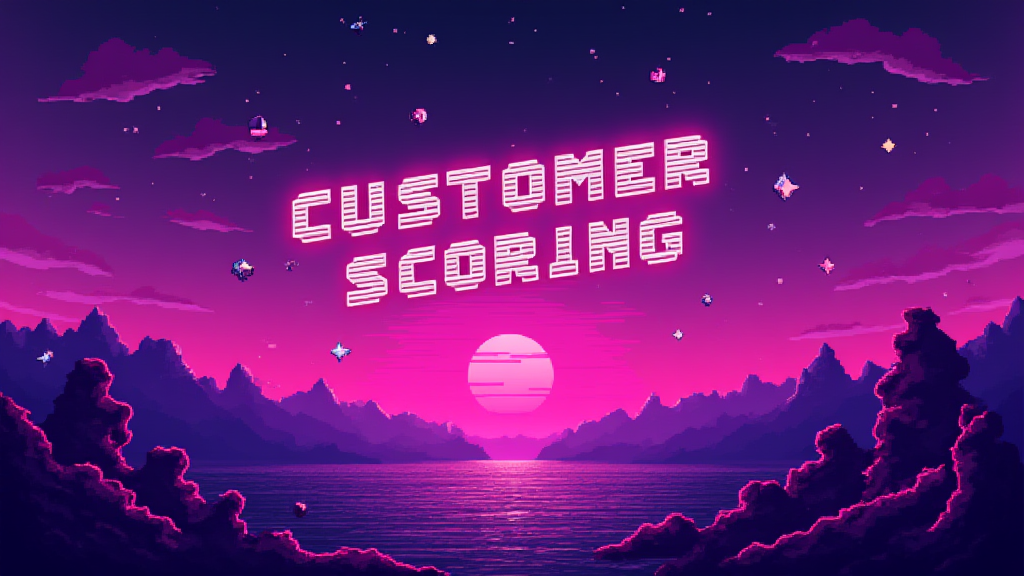Customer Intent Scoring: Predict Buyer Behavior

Published on: October 01, 2024
Customer Intent Scoring is a data-driven approach that helps sales and marketing teams assess the likelihood of a prospect or customer taking a desired action, such as making a purchase or engaging with a product. By analyzing various behavioral and demographic signals, this method assigns a numerical score to each individual, indicating their level of interest and readiness to buy. To learn more about related scoring methods, check out our customer relationship score.
Why Customer Intent Scoring Matters 🎯
In today's competitive business landscape, understanding customer intent is crucial for:
- Prioritizing leads and opportunities
- Personalizing marketing campaigns
- Improving sales efficiency
- Enhancing customer experience
- Optimizing resource allocation
Key Components of Customer Intent Scoring
An effective Customer Intent Scoring model typically considers the following factors:
1. Behavioral Signals 👀
- Website visits and page views
- Content downloads
- Email opens and click-throughs
- Social media interactions
- Product demo requests
2. Demographic Data 📊
- Company size and industry
- Job title and role
- Location
- Budget
3. Historical Data 📜
- Past purchases
- Previous interactions with sales team
- Support ticket history
Implementing Customer Intent Scoring
To create an effective Customer Intent Scoring system, follow these steps:
- Define your objectives: Determine what actions indicate high intent for your business.
- Identify relevant data points: Select the behavioral and demographic signals that best predict intent.
- Assign weights to each factor: Determine the relative importance of each signal in predicting intent.
- Create a scoring model: Develop an algorithm or use machine learning to calculate intent scores.
- Implement and integrate: Incorporate the scoring system into your CRM and marketing automation tools.
- Monitor and refine: Continuously analyze and adjust your model based on real-world results.
Benefits of Customer Intent Scoring 💪
| Benefit | Impact |
|---|---|
| Improved lead quality | Higher conversion rates |
| Personalized messaging | Increased engagement |
| Efficient resource allocation | Better ROI on sales and marketing efforts |
| Proactive customer service | Enhanced customer satisfaction |
Challenges and Best Practices
While Customer Intent Scoring can be highly effective, it's important to be aware of potential challenges:
- Data quality: Ensure your data is accurate, up-to-date, and comprehensive.
- Privacy concerns: Adhere to data protection regulations and maintain transparency with customers.
- Over-reliance on scores: Use intent scores as a guide, not a definitive measure of customer behavior.
- Model bias: Regularly audit your scoring model for potential biases and adjust accordingly.
Measuring the Success of Your Intent Scoring Model
To evaluate the effectiveness of your Customer Intent Scoring system, consider these metrics:
- Conversion rate improvements
- Increase in average deal size
- Reduction in sales cycle length
- Higher customer lifetime value
- Improved marketing ROI
By continuously monitoring these metrics and refining your model, you can ensure that your Customer Intent Scoring system remains a valuable tool for your sales and marketing efforts.
Implementing Customer Intent Scoring in Your Organization
As you consider implementing or improving your Customer Intent Scoring system, ask yourself these questions:
- What key actions indicate high intent for our specific products or services?
- How can we integrate intent scoring with our existing CRM and marketing automation tools?
- What training do our sales and marketing teams need to effectively use intent scores?
- How will we measure the impact of intent scoring on our overall business performance?
- What processes can we put in place to ensure our scoring model remains accurate and unbiased over time?
By addressing these questions, you'll be well on your way to leveraging Customer Intent Scoring to drive growth and efficiency in your organization.
















